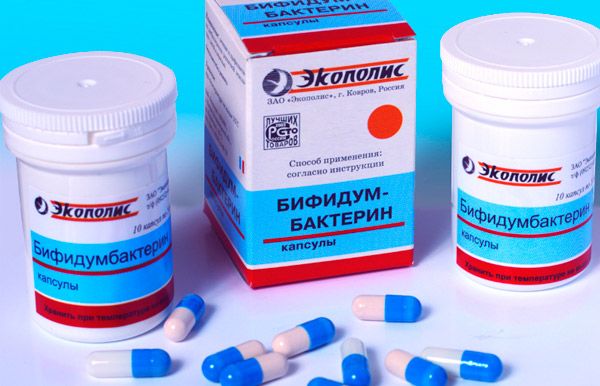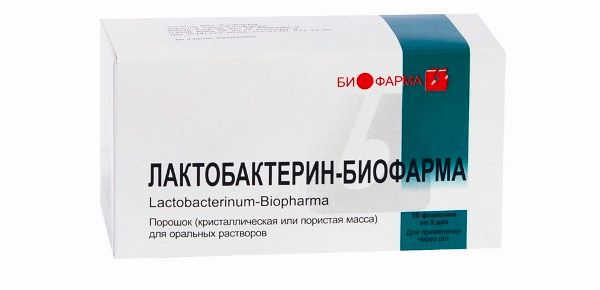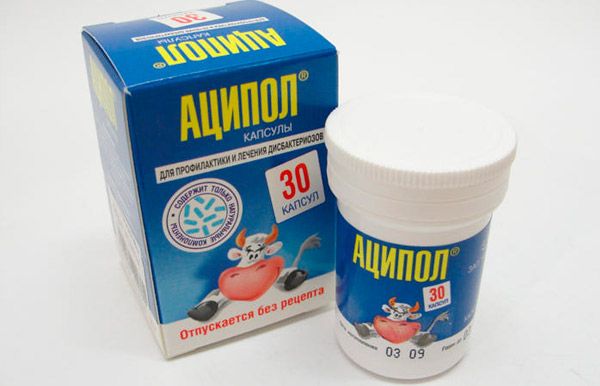Medical expert of the article
New publications
Preparations
Probiotics and prebiotics: what is the difference?
Last reviewed: 07.07.2025

All iLive content is medically reviewed or fact checked to ensure as much factual accuracy as possible.
We have strict sourcing guidelines and only link to reputable media sites, academic research institutions and, whenever possible, medically peer reviewed studies. Note that the numbers in parentheses ([1], [2], etc.) are clickable links to these studies.
If you feel that any of our content is inaccurate, out-of-date, or otherwise questionable, please select it and press Ctrl + Enter.
Recently, people have started to talk a lot about the benefits of bifido- and lactobacilli, but not everyone understands what they are. Probiotics and prebiotics: what is the difference? Probiotics are live microorganisms found in dairy products (yogurts, kefir), while prebiotics are the remains of food eaten in the body. They promote the growth of bifido- and lactobacilli. These substances are found in garlic, various cereals, and artichokes.
Probiotics and prebiotics for the intestines
How do probiotics help protect intestinal microflora? One way is to populate it with “useful” bacteria, which should displace harmful microorganisms. But it should be remembered that this method will only work effectively if the microflora, in which conditions for the development of harmful bacteria previously arose, is corrected. Ignoring this fact will lead to the fact that beneficial bacteria will have to be taken constantly, and their excess can cause diarrhea.
Another way is to normalize the intestinal flora and use products that are food for bacteria. In this case, it is necessary to use prebiotics. These substances are indigestible food residues that have a positive effect on the body. They selectively promote the development or activation of certain types of bacteria living in the large intestine, thereby having a beneficial effect on the health of the entire body.
List of probiotics and prebiotics
List of the most popular probiotics for improving intestinal microflora:
- "Bifidumbacterin Forte" is a probiotic of the latest generation. Since the capsule has a very strong shell, it passes through the small intestine and stomach without dissolving. Therefore, bifidobacteria that enter the large intestine remain intact;

- "Profibor" has a higher saturation of bifidobacteria - one packet contains approximately 10 servings of useful substances contained in the drug "Bifidumbacterin Forte";
- "Biovestin", which contains 2 types of bifidobacteria at the same time;
- "Linex" is one of the most popular probiotics, as it contains 3 components of intestinal microflora, located in different parts of this organ;
- Another very popular probiotic drug is Bifiform.

There are also several popular prebiotics - Duphalac, which helps to normalize the level of acidity in the intestines, and Probalance, which contains dietary fiber necessary for the body.

Russian probiotics and prebiotics
Among Russian drugs, the following probiotics and prebiotics stand out:
- Single-component agents – Lactobacterin, Colibacterin, and also Bifidumbacterin;

- Multicomponent preparations manufactured in Novosibirsk – Trilact, as well as Bifidum BAG;
- Baktistatin is a complex product that contains a bacterial growth medium, not live microorganisms. Baktistatin has an effective pro- and prebiotic effect.
Prebiotics and probiotics in one preparation
Synbiotics are preparations containing food ingredients that include both prebiotics and probiotics. Such a combination allows mutually enhancing the effectiveness of the impact on various metabolic and physiological processes in the body. Such preparations include the following: "Bifiform", "Polybacterin", "Baktistatin", "Bifidumbacterin forte", as well as "Primadophilus", etc.
How to take prebiotics and probiotics?
The complex probiotic Biovestin-lacto should be taken before meals (half an hour) or after them (1 hour later). The daily dosages are: children under 1 year old - no more than 1 ml; children 1-6 years old - 1 ml for each year of life (for example, a child of 3 years old - 3 ml, 4 years old - 4 ml, etc.); children 6-12 years old - 6 ml; children over 12 years old, as well as adults - 12 ml.
Adults take the prebiotic Baktistatin 1-2 capsules twice a day during meals. In case of poisoning, take 2 capsules three times a day.
Prebiotic Eubicor for children aged 3-6 years - 1 sachet, for children aged 6-12 years - 2 sachets (the volume of the sachets is 1.5 g). Adults are prescribed 1-2 sachets with a volume of 3 g.
Probiotics and prebiotics in foods
Foods that contain the most prebiotics:
- raw - Jerusalem artichoke, garlic, chicory root, dandelion greens, onions and leeks, wheat bran, asparagus, bananas;
- cooked - wheat flour and onions.
Products that contain probiotics are, first of all, kefir. In addition, this substance can be found in cheese and cottage cheese, as well as onions, artichokes and various home-made pickles and salts - sauerkraut, pickled apples, tomatoes and cucumbers.
Blends with probiotics and prebiotics
In the process of manufacturing infant formulas, manufacturers create a composition that will be as close as possible to mother's milk in its properties. To do this, most of them include complexes of pro- and prebiotics.
Modern research shows that formulas containing probiotic strains, as well as prebiotic oligosaccharides, have a positive effect on the health of infants under 1 year of age, providing them with a more comfortable digestive process.
It was also found that children who were fed formulas with prebiotics in their composition had more regular and soft stools. In addition, it was found that babies who drank milk formulas with probiotics were much less likely to get intestinal infections or suffer from fever than babies who were given formulas without these substances.
Similac Premium infant formula contains both pre- and probiotics, so it helps strengthen the baby's immunity and improves the digestive process.
Probiotics and prebiotics for children
Often, the child receives the necessary amount of beneficial microorganisms from mother's milk, provided that she herself consumes enough of the necessary substances. But during or immediately after an illness, the baby's intestinal microflora is weakened, and therefore it needs additional help. In such cases, doctors prescribe medications that will be safe for any baby, even in the first days of its life.
The following drugs are probiotic: Linex, Bifidumbacterin for newborns, as well as Bifiform and Trilact. These drugs differ from each other in the number of colony-forming microorganisms per 1 ml of the drug.
Prebiotic preparations are Lactusan, Normase, as well as Prelax and Inulin. These preparations differ in the content of different low-molecular carbohydrates. For example, the basis of the preparation Normase is lactulose.
Best Probiotics and Prebiotics
Probiotics in the form of medicines are available in the form of ampoules, tablets, powders, capsules, and also bottles. The liquid form is considered the most effective, as they have the strongest concentration and therefore have an immediate effect. The effect of dry probiotics begins only after 5-8 hours and extends over a fairly long period of time. The duration of the course of admission can be no more than 1 month. The best probiotics for the intestines:
- Lactobacterin, which contains microorganisms that live in the intestines and mouth. They help remove cholesterol from the body and also help the process of carbohydrate excretion;
- Bifidumbacterin, the components of which help to release vitamins of groups B and K. This drug is allowed to be given even to infants. This medicine also helps to eliminate inflammation in the intestines;
- Colibacterin - this probiotic is usually prescribed to elderly people with colon pathologies, chronic colitis and other intestinal diseases;
- Linex contains substances that help produce calcium and iron, as well as vitamins B and E, C and K. The drug improves the digestion process;
- Acipol, which contains kefir grains (that's why it tastes like fermented milk products). This component helps eliminate acute intestinal diseases, as well as inflammation;

- Bifiform, which helps produce a special intestinal acid. The beneficial substances contained in this drug are not destroyed by antibiotics, so it can be taken in combination with them.
Prebiotics
Dufalac, which is a lactulose solution, contains at least 67 g of this carbohydrate in 100 ml of the drug.
Prebiotic Hilak Forte is a medicine produced in the form of a drinking suspension. It contains 4 elements, including the products of the healthy intestinal microflora. In addition, the drug contains auxiliary substances: citric, phosphoric, and lactic acids.
Calcium pantothenate is a medicine containing a complex of minerals and vitamins. The drug improves metabolism and increases the growth of intestinal bacteria. The active substances of the prebiotic prevent the development of pathogenic flora in the intestine.
Lysozyme is a natural antibacterial drug, the substances of which are produced by some types of bacteria. The use of Lysozyme allows you to destroy pathogenic microorganisms in the digestive tract, and also promotes the development of healthy microflora. In addition, the drug enhances the local effect of antibiotics.
Cheap Probiotics and Prebiotics
Probiotics and prebiotics can be purchased at low prices. For example, these are Lactobacterin and Bifidobacterin, which are produced in the form of powder contained in ampoules or bottles.
Attention!
To simplify the perception of information, this instruction for use of the drug "Probiotics and prebiotics: what is the difference?" translated and presented in a special form on the basis of the official instructions for medical use of the drug. Before use read the annotation that came directly to medicines.
Description provided for informational purposes and is not a guide to self-healing. The need for this drug, the purpose of the treatment regimen, methods and dose of the drug is determined solely by the attending physician. Self-medication is dangerous for your health.


 [
[